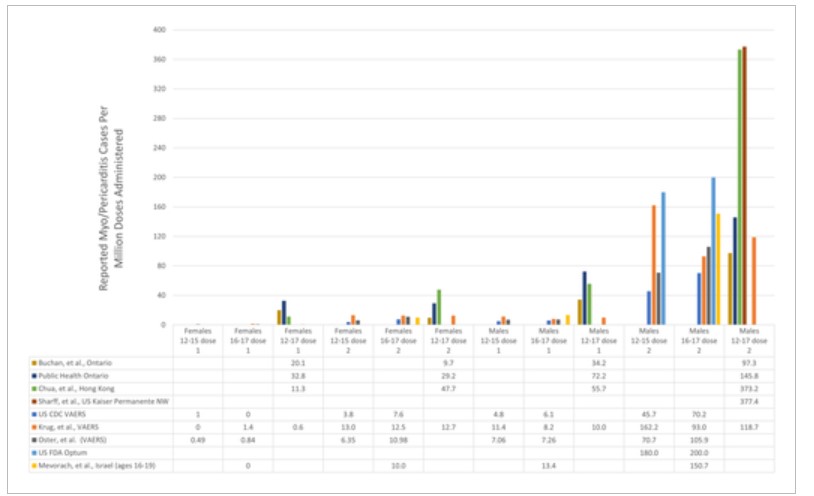In the Spring of 2021, an Israeli doctor voiced a concern about cases of myocarditis that he was witnessing among young men who had received the Pfizer mRNA COVID vaccine.
There was no apparent reason to doubt his testimony, and that should have been sufficient to alert physicians around the world to be on the lookout for similar occurrences. If confirmed in the experience of others, the Israeli doctor’s concern could be taken into prudent consideration for medical practice and public health worldwide.
But we live in the age of empiricism and “science-based” recommendations. In this age, the clinical judgment of physicians is not a fact until it has a number attached to it. Also, questions of right and wrong and of what to do can only be decided when “data” have been collected.
So a conflict of numerical facts was quickly entered into.
At first, the US authorities seemed to downplay the seriousness of the Israeli report. They examined the VAERS database and discovered an association between the vaccine and the subsequent occurrence of myocarditis. They estimated that the frequency of vaccine-induced myocarditis to be between 1 in x-thousands to 1 in y-thousands, not high enough to be alarmed.
Fortunately, people on our side did their own investigation of the VAERS database. They conducted it more meticulously than the CDC had and found much higher rates of vaccine myocarditis, between 1 in x’-thousands and 1 in y’-thousands. They deemed these rates to be frequent enough to warrant caution.
But people on the other side found our friends’ report appalling and argued that mining a passive database like VAERS is the worst kind of observational research. They agreed that vaccine myocarditis could occur, but the rate was probably much smaller, maybe 1 in z-thousands. They accused our side of fomenting vaccine hesitancy.
But our side scored additional points. Other reports came in from various countries also showing an increased risk of myocarditis after the vaccine. Unfortunately, those reports were not safe from criticism and we even lost a major point when a study from Ottawa that had estimated the rate of vaccine myocarditis at 1 in 1000 was retracted due to a gross miscalculation. Ouch!
The other side counter-attacked. “Myocarditis occurs in COVID too!” What followed was an all out empirical war on the dumbest of all questions: Is COVID myocarditis more common than vaccine myocarditis?
The engagement was relentless. At first, our side seemed to have the upper hand: “You used the wrong denominator for the control group!” “Your point is misleading. You didn’t stratify by age and sex!” “What ICD codes did you use to estimate myocarditis rates again?”
And the debate degenerated to an even dumber level: “Vaccine myocarditis is benign!” said the other side. “Not at all!” responded our side, “it is MISC-myocarditis that is benign!”
To this day I don’t think either side can claim victory in terms of changed minds.
It’s a particularly dumb debate since the respective positions of each side—that vaccine mandates are justified or not justified—has to do with how each side perceives the totality of the problem with COVID and the totality of the pandemic response. A narrow dispute about relative rate or relative severity of myocarditis is of no material importance to those underlying beliefs.
The acrimonious hunt for the empirical facts is nothing more than a plain exercise in confirmation bias. No matter how fine the data and how well-threaded the analysis, numerical facts cannot be weaved into a moral garment. Let’s face it, the empiricist has no clothes.
